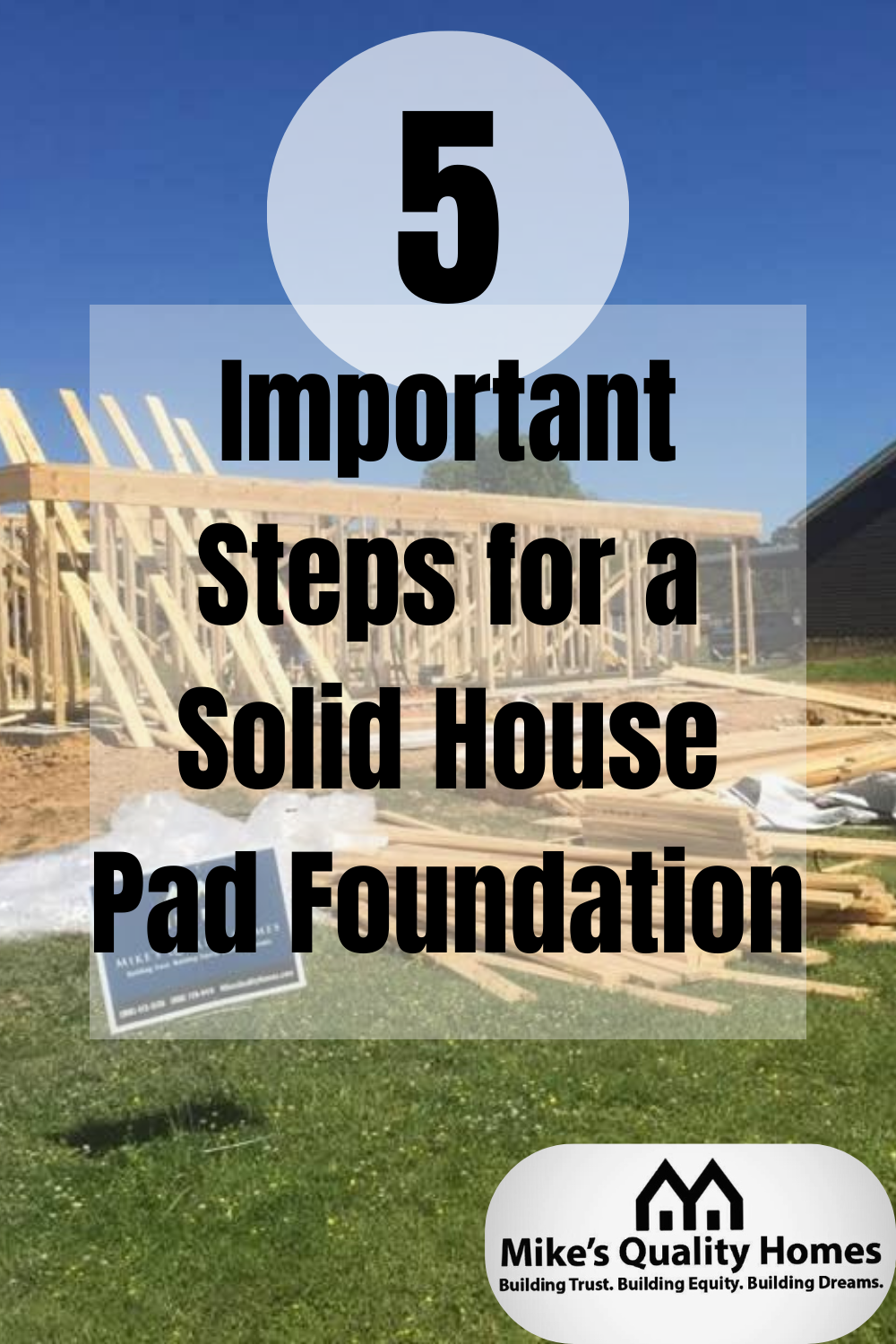Building your dream home is an exciting journey, but it all begins with a strong foundation. A well-constructed house pad is essential for the stability and longevity of your new home. At Mike’s Quality Homes, we understand that every step of this process matters. Whether you have questions, need guidance, or require any service to make your dream home a reality, we’re here to help. From soil testing to strategic planning, we’ve got you covered.
1. Property Evaluation: Addressing Soil Stability, Tree Roots, and Drainage
When considering a property for your dream home, ensure it supports soil stability. If the chosen property has tree roots from cleared-out trees of any size within the past four years, it’s crucial to let your builder know. Additional soil may need to be removed before constructing the house pad. Additionally, ensure the entire property has proper drainage to prevent potential issues. Google Maps can assist in identifying existing trees and structures on your potential property, providing valuable insights into past conditions for strategic planning. Before breaking ground, consult someone experienced in dirt work and involve a soil testing company. Soil quality varies significantly, impacting the stability of your house pad. Different soils compact differently, making soil testing a vital starting point.
2. Proper Compaction Testing – Ensuring Uniformity
Once the property’s soil stability and drainage are assured, the next crucial step is proper compaction testing. Conduct tests every 8 inches throughout the depth of the house pad to guarantee uniform compaction. Ensure even distribution and layer-by-layer compaction for optimal results. The pad must achieve at least 95% compaction for the construction of a new home to begin, verifying its stability under the weight of the foundation.
3. Smart Tree Choices Near Your Home
When choosing trees near your house pad, be mindful. Some trees, like Crepe Myrtle, River Birch, Drake Elm, and Bradford Pear, have a high demand for water. This means they can draw too much moisture from the soil, leading to uneven ground settlement and potential issues with your house foundation. Pick trees with moderate water needs and consider their potential size. Strategic tree selection can help keep your house pad stable and prevent future problems.
4. Plan Smart: Set Your Floor Plan Before Building Your House Pad
Before you start building your house pad, make sure your floor plan is ready. Having precise dimensions is key for a perfect fit on your property. Take your time, wait until your floor plan is locked in, and then kick off your house pad construction with confidence.
5. Foundation Matters: Invest in a Solid Base
Your house pad is more than a foundation; it’s the enduring support for your home. Don’t cut corners or skip essential steps—neglecting them can lead to costly issues later. Prioritize quality dirt work and meticulous planning for a stable and long-lasting home. Investing in proper compaction testing and following these guidelines is crucial for a safe foundation.

